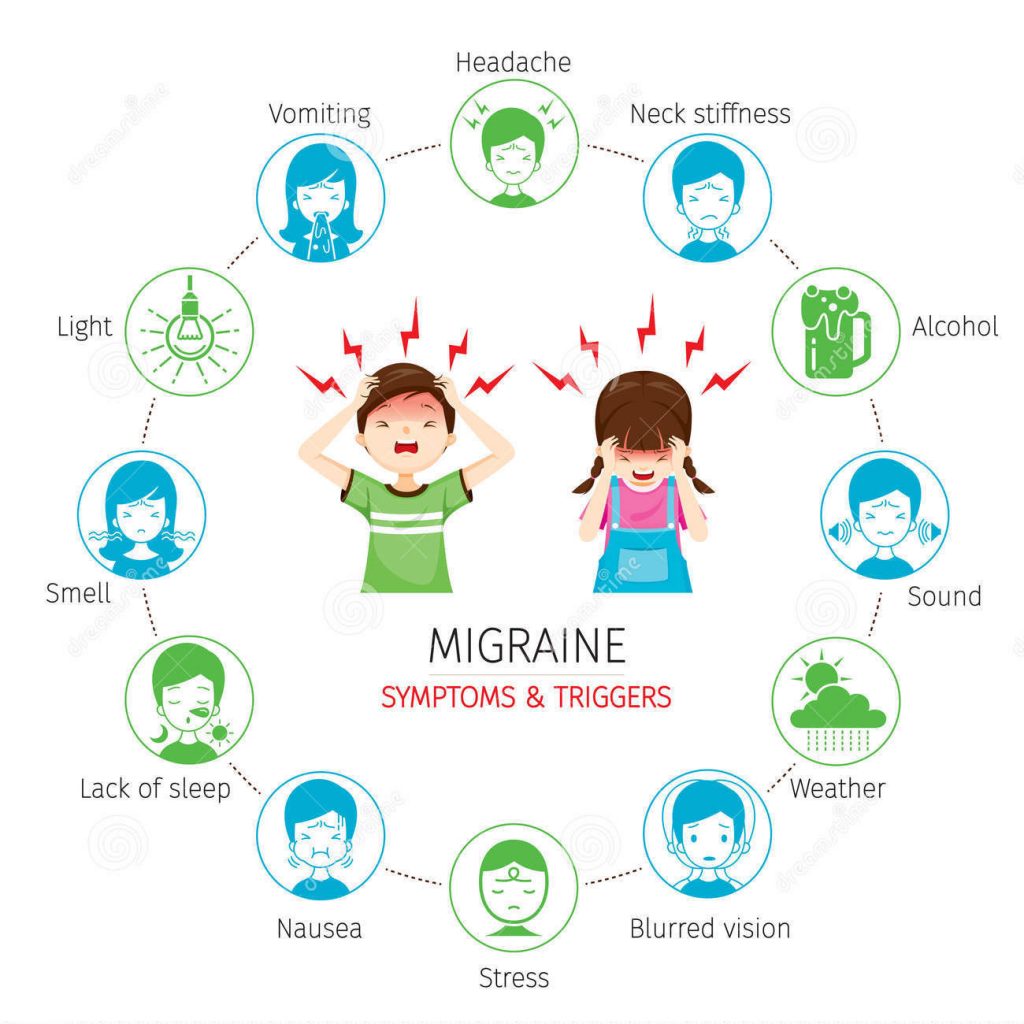Because there are different types of migraines, there are different migraine symptoms. Everyone who suffers from migraines will not have each symptom. Because there is no specific test for migraines, keeping track of symptoms is key in the diagnosis of migraines. It is important that you seek a professional diagnosis because several migraine symptoms are also symptoms of other disorders and diseases.
Seek immediate medical attention if you experience a severe pain or symptom that you’ve never felt before, it could be a sign of a serious medical condition.
Throbbing, pulsating pain – 85 percent
Light sensitivity – 80 percent
Sound sensitivity – 76 percent
Nausea – 73 percent
Pain on one side – 59 percent
Vision changes, blurred vision – 44 percent
Aura – 36 percent
Vomiting – 29 percent

Hormonal changes: Women may experience migraine symptoms during menstruation, due to changing hormone levels.
Emotional triggers: Stress, depression, anxiety, excitement, and shock can trigger a migraine.
Physical causes: Tiredness and insufficient sleep, shoulder or neck tension, poor posture, and physical overexertion have all been linked to migraines. Low blood sugar and jet lag can also act as triggers.
Triggers in the diet: Alcohol and caffeine can contribute to triggering migraines. Some specific foods can also have this effect, including chocolate, cheese, citrus fruits, and foods containing the additive tyramine. Irregular mealtimes and dehydration have also been named as potential triggers.
Medications: Some sleeping pills, hormone replacement therapy (HRT) medications, and the combined contraceptive pill have all been named as possible triggers.
Triggers in the environment: Flickering screens, strong smells, second-hand smoke, and loud noises can set off a migraine. Stuffy rooms, temperature changes, and bright lights are also possible triggers.
At the Smith Sinus Migraine Institute, we offer the very best in facial plastic surgery procedures, including facelift, rhinoplasty, and eyelid surgery. Led by renowned board certified facial plastic surgeon, Dr. Kevin Smith, we only provide the highest quality patient care and use only the latest in medical technology and surgical techniques.
Copyright © 2023
Smith Center | SMITH Sinus Migraine Institute Created by Giron Consulting | Where Doors Open